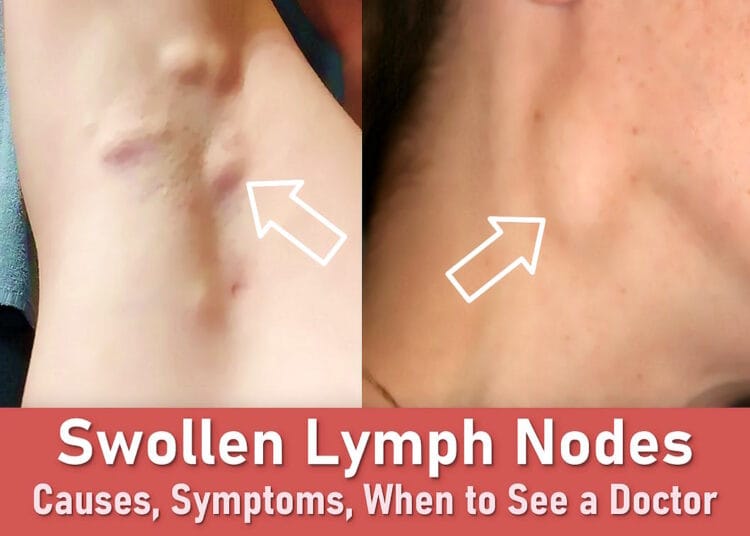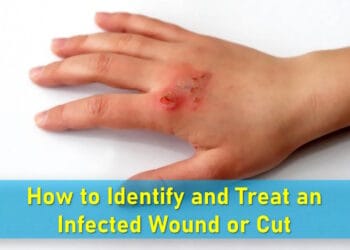Swollen lymph nodes, often called swollen glands, are small, bean-shaped structures found in the neck and other parts of the body. They play an important role in your immune system by filtering out bacteria, viruses, and other harmful substances before these can spread. In most cases, swelling is a sign that your body is actively fighting an infection. However, if the swelling persists or continues to increase, it may sometimes signal a more serious underlying condition that needs medical attention.
What Are Lymph Nodes?
Lymph nodes are small, bean-shaped structures that are an important part of your immune system. They act as filters for lymph fluid, which carries white blood cells that help fight infections and other harmful substances. When your body is fighting off germs, infections, or inflammation, nearby lymph nodes may swell as they work harder to trap and destroy these invaders.
Lymph nodes are located throughout the body, both near the surface of the skin and deep inside the chest and abdomen. When people notice swollen lymph nodes, they are often in more visible or easy-to-feel areas, but deeper lymph nodes can also become enlarged and may require imaging tests to detect.

Common Locations for Swollen Lymph Nodes
- Neck: Cervical lymph nodes on the sides or back of the neck are among the most frequently swollen, often due to colds, throat infections, or respiratory illnesses.
- Under the jaw: Submandibular lymph nodes may enlarge with dental problems, gum infections, or throat issues.
- Behind the ears: Swelling in lymph nodes near the ears can be linked to ear infections or certain skin conditions affecting the scalp.
- Above the collarbone: Swollen supraclavicular lymph nodes can indicate infections in the chest or abdomen, and in some cases, more serious conditions.
- Groin: Inguinal lymph nodes respond to infections or injuries in the legs, feet, or lower body.
- Back of the head: Occipital lymph nodes may enlarge due to scalp infections or skin irritations.
- Mediastinal (chest area): These lymph nodes lie deep within the chest between the lungs and can swell with lung infections, tuberculosis, or certain cancers. They are not visible from the outside and are usually detected through imaging tests.
- Abdominal: Found deep within the abdomen, these lymph nodes can swell due to digestive tract infections, inflammatory bowel disease, or abdominal cancers. They typically require ultrasound, CT scans, or MRI to be identified.
- Pelvic: Located deep in the lower abdomen and pelvis, these lymph nodes may enlarge due to infections in the pelvic organs or certain gynecological or urological conditions.
Why Do Lymph Nodes Become Swollen?
Swollen lymph nodes, or lymphadenopathy, occur when your immune system is active. Common triggers include:
- Infections: Colds, flu, strep throat, or skin infections often cause temporary swelling.
- Immune responses: Autoimmune diseases like lupus can lead to enlarged lymph nodes.
- Rarely, cancer: Persistent, painless swelling, especially in cervical lymph nodes, may need further evaluation.
When lymph nodes detect germs, they produce extra white blood cells, leading to noticeable swelling. This is often accompanied by other symptoms, depending on the underlying issue.
Common Symptoms of Swollen Lymph Nodes
Swollen lymph nodes can range from pea-sized to as large as a kidney bean. You might notice:
- Tenderness or pain when touching the affected area.
- Associated symptoms: Runny nose, sore throat, or fever if caused by an infection.
- Widespread swelling: Swollen lymph nodes all over the body could indicate systemic infections like mononucleosis.
- Concerning signs: Hard, immovable lumps (especially a lump under the chin or swollen lymph nodes under jaw on one side), night sweats, or unexplained weight loss warrant medical attention.
While minor swelling often resolves with rest and warm compresses, persistent or severe cases may need treatment for the underlying cause.
What Causes Swollen Lymph Nodes?
Lymph nodes are typically small, pea-sized structures that work silently as part of your immune system. Normally, you might not even notice them. But when they’re actively fighting infection or reacting to other health issues, they can swell to the size of a marble or larger, making them noticeable in areas like the neck (cervical lymph nodes) or behind the ear. Deeper lymph nodes, such as those in the chest or abdomen, may not be visible but can still cause discomfort when enlarged.
Common Causes: Infections
Infections are the most frequent trigger for swollen lymph nodes. When harmful bacteria or viruses enter your body, nearby lymph nodes trap these invaders and ramp up immune cell production, leading to swelling and tenderness. This swelling usually subsides within 1-2 weeks after the infection clears. Examples include:
- Swollen lymph nodes in neck: Often due to strep throat, colds, or dental infections.
- Occipital lymph nodes (back of head): May enlarge from scalp conditions like psoriasis or fungal infections.
- Armpit nodes: Can react to skin infections or minor cuts from shaving.
- Swollen nodes in groin: Frequently caused by infections in the legs or feet.
- Widespread swelling: Viral illnesses like mononucleosis can affect multiple areas at once, including lymph nodes in the head and neck.
Less Common Causes: Cancer and Chronic Conditions
While rare, persistent swelling, especially if painless, could signal serious conditions like cancer or autoimmune diseases. Cancer cells may spread to nearby lymph nodes, causing gradual enlargement. Examples include:
- Lymphoma/leukemia: Often causes multiple swollen lymph nodes under the jaw, in the neck, or groin.
- Metastatic cancers: Breast or lung cancer may spread to cervical lymph nodes or nodes above the collarbone (a lump on clavicle).
Unlike infection-related swelling, cancer-associated enlargement typically develops slowly and may feel hard or immovable.
Other Possible Causes
Additional factors that can lead to enlarged lymph nodes include:
- Medications: Some antibiotics or anti-seizure drugs may trigger swelling as a side effect.
- Dental issues: Procedures or infections can cause a lump under the chin or swollen lymph nodes under jaw on one side.
- Autoimmune diseases: Conditions like lupus may cause generalized swelling of lymph glands in the neck and elsewhere.
- Rare infections: HIV or tuberculosis can lead to prolonged swelling in cervical nodes or lymph nodes back of neck.
How to Check for Swollen Lymph Nodes
Swollen lymph nodes can vary from pea-sized to as large as a cherry. You might notice them when they become tender or cause discomfort during everyday activities. Here’s what to look for in common areas:
- Neck and jaw: Swollen lymph nodes under the jaw may hurt when chewing or turning your head. Gently feel along your neck below the jawline to check for lumps.
- Behind the ear: A lymph node behind the ear might become noticeable when wearing glasses or touching the area.
- Back of the head: Occipital lymph nodes may be felt when brushing hair or resting your head against a pillow.
While some swelling is normal during infections, painless or persistent enlargement should be evaluated by a doctor.
When to See a Doctor
In many cases, swollen lymph nodes improve without treatment. However, it is important to pay attention to certain signs that may indicate a more serious underlying condition. You should make an appointment with a healthcare professional if you notice:
- Swelling with no clear cause
- Lymph nodes that keep increasing in size or remain enlarged for more than 2 to 4 weeks
- Nodes that feel hard, rubbery, or do not move when pressed
- Additional symptoms such as fever, drenching night sweats, or unexplained weight loss
- A persistent cough that does not improve
- Swollen nodes in the armpit without a recent injury to the arm
Seek medical care immediately if you experience any of the following:
- Difficulty swallowing or breathing
- Hard, immovable nodes in the neck or above the collarbone
- Unexplained weight loss of 10 pounds or more without trying
- Severe or persistent swelling lasting more than 4 weeks
Early evaluation can help identify the cause of the swelling and ensure you receive the right treatment if needed.
How Doctors Diagnose Swollen Lymph Nodes
During your appointment, your doctor will typically follow this process:
Medical History Review
Your doctor will ask about:
- Recent illnesses or injuries
- Your complete health history
- Current medications
- Other symptoms you’ve experienced
Physical Examination
During the exam, your doctor will:
- Measure the size of swollen nodes
- Check for tenderness and mobility
- Assess texture (soft vs. hard)
- Compare with previous measurements if available
Diagnostic Tests
Depending on findings, your doctor may recommend:
- Blood tests: To check for infections or immune disorders
- Imaging: Ultrasound for cervical lymph nodes or CT scans for deeper nodes
- Biopsy: If cancer is suspected, a small tissue sample may be taken
Treatment Options for Swollen Lymph Nodes
When No Treatment Is Needed
Many cases resolve without intervention, especially when caused by minor viral infections. Your doctor may recommend monitoring if:
- Swelling is decreasing
- No other concerning symptoms exist
- Nodes remain soft and movable
Treating Infection-Related Swelling
For bacterial infections causing swollen lymph nodes in neck or other areas:
- Antibiotics to target the infection
- Over-the-counter pain relievers
- Warm compresses to reduce discomfort
Cancer-Related Treatments
If swollen cervical nodes or other lymph nodes are cancer-related, options may include:
- Surgical removal of affected nodes
- Radiation or chemotherapy
- Targeted drug therapies
Your doctor will create a personalized plan based on your specific diagnosis and overall health.
Home Care and When to Seek Medical Help
While most swollen lymph nodes resolve on their own, these self-care measures can help ease discomfort:
- Apply warm compresses: Helps reduce tenderness in swollen glands in neck or other areas
- Get adequate rest: Supports your immune system’s recovery
- Stay hydrated: Fluids help flush out infection-causing toxins
Preventing Swollen Lymph Nodes
While you can’t prevent lymph nodes from reacting to infections, these steps reduce infection risks:
- Practice good hygiene: Regular handwashing prevents infections that cause swollen lymph nodes in neck or groin areas
- Maintain oral health: Brush and floss daily to avoid infections leading to swollen lymph nodes under jaw
- Stay current on vaccinations: Flu and other vaccines prevent infection-related swelling
- Avoid sharing personal items: Prevents spread of contagious illnesses
- Practice safe sex: Reduces risk of STIs that may cause groin node swelling
- Monitor medications: Some drugs may cause enlarged lymph nodes as a side effect
Key Takeaways
- Swollen lymph nodes (like cervical lymph nodes or those behind ears) usually indicate normal immune response
- Most cases resolve within 2-3 weeks as infections clear
- Persistent swelling (especially painless, hard nodes) requires medical evaluation
- Proper hygiene and preventive care can reduce infection risks
Frequently Asked Questions
When should swollen lymph nodes concern me?
Consult your doctor if nodes:
- Exceed ½ inch (1 cm) in diameter
- Keep growing or remain swollen 4+ weeks
- Appear with fever, night sweats, or weight loss
What else might feel like swollen lymph nodes?
Lumps could be:
- Harmless cysts or lipomas
- Abscesses or infected glands
- Salivary stones (near jawline)
Are swollen lymph nodes dangerous?
Most are harmless infection responses. However, persistent swelling without infection may indicate conditions needing treatment.
How long do neck lymph nodes stay swollen?
Swollen lymph nodes in neck typically improve within 2-3 weeks. Viral infections may take up to 4 weeks.
Can stress cause swollen lymph nodes behind ear?
While stress weakens immunity, noticeable swelling in lymph nodes around ear usually indicates active infection.
What do cancerous neck nodes feel like?
Possible signs include:
- Hard, marble-like consistency
- Painless in early stages
- Located above collarbone
Only medical testing can confirm cancer.

































